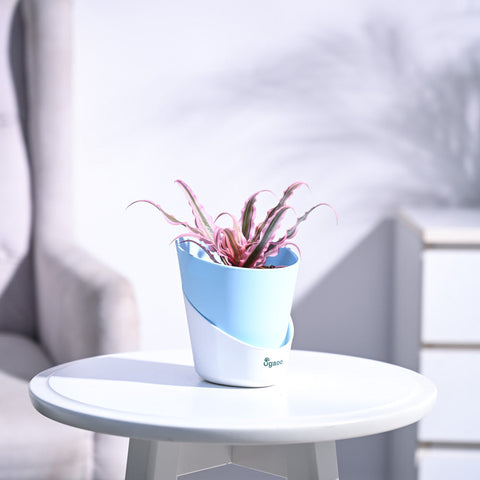As part of the huge Bromeliad family of tropical plants, the Earth Star - also called the Cryptanthus plant - hails from the tropical, hot and humid forests of Brazil. Many Bromeliad plants grow as epiphytes, meaning they grow right on top of other plants but survive without extracting any nutrients from them. However, Earth Star plants grow on the floor of the dense forest area in spaces where light filters through the thick canopy.
• Benefits of the Cryptanthus Bromeliad Plant
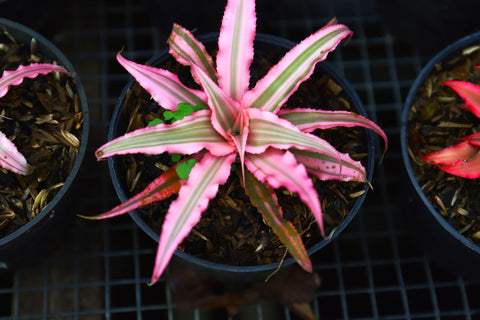
1. Aesthetic Appeal
Cryptanthus plants are prized for their striking foliage. They typically have rosettes of thick, strappy leaves that come in various colors, including shades of green, red, pink, and even purple. The intricate patterns and vibrant hues make them popular choices for indoor gardens, terrariums, and as accent plants in landscaping.
2. Low Maintenance
One of the significant appeals of Cryptanthus plants is their low maintenance requirements. They thrive in indirect light and prefer well-draining soil. They're also relatively drought-tolerant, making them suitable for busy individuals or those new to plant care. This aspect can be highlighted in content targeting beginners or people looking for easy-to-care-for plants.
3. Symbolism
In terms of symbolism, Earth Stars represent grounding, stability, and connection to nature. Their name, Cryptanthus, is derived from the Greek words "kryptos" meaning hidden and "anthos" meaning flower, alluding to their inconspicuous flowers. This hidden beauty can be metaphorical, symbolizing the idea of finding beauty and significance in the seemingly ordinary or overlooked aspects of life.
4. Air Purification
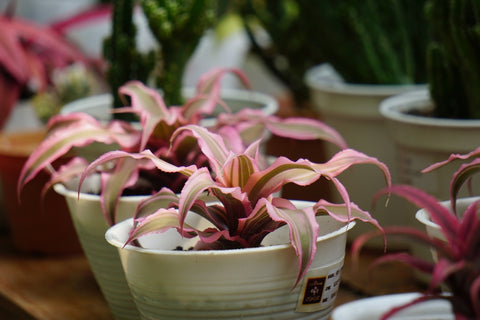
Like many houseplants, Cryptanthus plants contribute to indoor air purification by absorbing harmful toxins and releasing oxygen. This aspect can be emphasized in content targeting health-conscious individuals or those looking to improve indoor air quality naturally.
5. Versatility
Cryptanthus plants can be incorporated into various indoor and outdoor settings, including terrariums, container gardens, and as ground cover in tropical landscapes. Their versatility makes them suitable for a wide range of design styles, from modern and minimalist to bohemian and tropical.
6. Rare Cryptanthus Types
Within the Cryptanthus genus, there are numerous species and cultivars, including some rare and collectible varieties prized by plant enthusiasts.
• How to Take Care of Cryptanthus Plants
Buy the Earth Star Plant
1. Light
Cryptanthus plants prefer bright, indirect light. Avoid placing them in direct sunlight, as this can scorch their leaves. If you’re able to get bright, indirect sunlight from a north or east-facing window, it is ideal. If growing Earth Star plants indoors, ensure they receive adequate light to maintain their vibrant colors and compact growth.
2. Cryptanthus Watering
Water your Cryptanthus plants regularly during the growing season (spring and summer), keeping the soil consistently moist but not waterlogged. Allow the top inch of soil to dry out slightly between waterings. Reduce watering frequency in the winter months when the plant's growth slows down. Always remember to avoid getting water in the center rosette to prevent rotting.
3. Humidity
Cryptanthus plants appreciate moderate to high humidity levels. You can increase humidity around the plant by placing a humidity tray filled with water and pebbles beneath the pot or by misting the foliage regularly. However, ensure good air circulation to prevent fungal issues.
4. Temperature
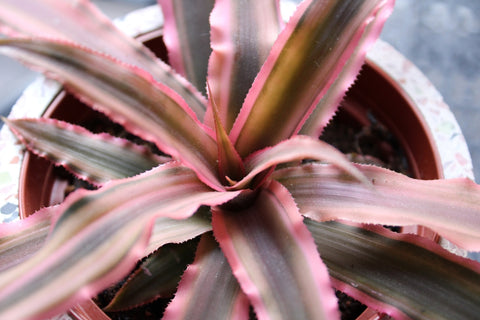
These plants thrive in temperatures between 65-80°F (18-27°C) during the day and slightly cooler temperatures at night. Protect them from drafts and sudden temperature fluctuations, as they can be sensitive to extreme cold or heat.
5. Soil
Use a well-draining potting mix formulated for succulents or bromeliads. A mixture of peat moss, perlite, and coarse sand works well. Good drainage is essential to prevent waterlogged soil, which can lead to root rot.
6. Fertilization
Feed Cryptanthus plants with a balanced liquid fertilizer diluted to half strength every 4-6 weeks during the growing season. Avoid fertilizing during the winter months when the plant is not actively growing.
7. Potting
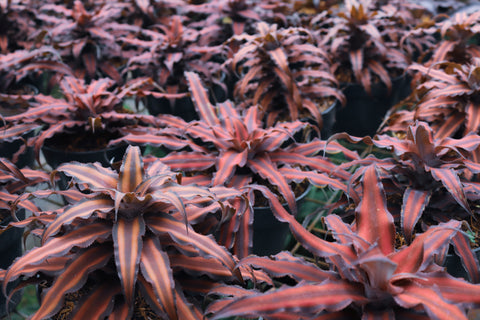
Repot Cryptanthus plants every 1-2 years to refresh the soil and provide room for growth. Choose a pot that is slightly larger than the current one, as these plants prefer slightly snug conditions. Repotting is best done in the spring when the plant is beginning its active growth period.
When growing, Earth Stars don't grow in height but horizontally, in length. They can grow up to 2 feet long and must be repotted when they start outgrowing their existing pots.
8. Pests and Diseases
Keep an eye out for common pests such as spider mites, mealybugs, and aphids. If detected, treat the plant promptly with insecticidal soap or neem oil. Additionally, ensure good air circulation and avoid overwatering to prevent fungal diseases such as root rot.



